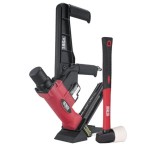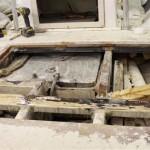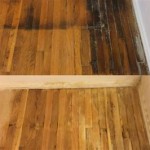Cream Wood Flooring: A Comprehensive Guide to Style, Durability, and Maintenance
Cream wood flooring presents a versatile and elegant option for homeowners seeking to brighten and expand the perceived space of their interiors. Its light hue offers a neutral backdrop that complements a wide array of decorating styles, from minimalist and Scandinavian to traditional and rustic. This article provides a comprehensive overview of cream wood flooring, encompassing its advantages, considerations, maintenance requirements, and various styles available.
The term "cream wood flooring" broadly describes flooring options that feature a light, off-white, or ivory color. This can be achieved through various wood species, stains, and finishes. The resulting effect is a bright and airy aesthetic that enhances natural light and creates a sense of openness. The popularity of cream wood flooring stems from its ability to seamlessly integrate into diverse design schemes and its capacity to elevate the visual appeal of any room.
Aesthetic Versatility and Design Integration
One of the primary advantages of cream wood flooring is its inherent aesthetic versatility. The neutral color palette acts as a blank canvas, allowing homeowners to experiment with different wall colors, furniture styles, and accent pieces. Unlike darker wood floors, which can sometimes dominate a room, cream flooring provides a subtle foundation that enhances the overall design without overpowering other elements. This adaptability makes it an ideal choice for individuals who enjoy frequently updating their interior décor.
Cream wood flooring can be effectively utilized in various rooms throughout the house. In living rooms, it creates a welcoming and inviting atmosphere, particularly when paired with comfortable seating arrangements and warm lighting. In bedrooms, it promotes a sense of serenity and relaxation, contributing to a restful environment. In kitchens, its bright hue can help reflect light, making the space feel larger and more functional. Even in hallways and entryways, cream wood flooring can create a positive first impression, welcoming guests with its light and airy appeal.
Furthermore, cream wood flooring complements a wide range of design styles. In minimalist and Scandinavian interiors, it reinforces the clean lines and emphasis on natural light. In traditional settings, it adds a touch of elegance and sophistication, particularly when combined with classic furniture and ornate details. In rustic spaces, it provides a subtle contrast to natural wood elements, creating a balanced and harmonious aesthetic. The key is to carefully consider the undertones of the cream color and coordinate them with the other elements in the room to achieve a cohesive and visually appealing design.
Durability and Material Considerations
The durability of cream wood flooring is heavily influenced by the type of wood used and the finish applied. Hardwood options, such as oak, maple, and hickory, are known for their resilience and ability to withstand everyday wear and tear. These species are particularly well-suited for high-traffic areas, such as living rooms and hallways. Softer woods, such as pine, may be more susceptible to dents and scratches, requiring more careful maintenance and potentially being better suited for lower-traffic areas like bedrooms.
Engineered wood is another popular option for cream wood flooring. It consists of multiple layers of wood veneer bonded together, with a top layer of hardwood that provides the desired aesthetic. Engineered wood offers several advantages, including increased stability and resistance to moisture, making it a suitable choice for areas with higher humidity levels, such as basements or kitchens. Additionally, engineered wood is often more affordable than solid hardwood, making it an attractive option for budget-conscious homeowners.
The finish applied to cream wood flooring plays a crucial role in its durability and maintenance. Polyurethane finishes are known for their excellent protection against scratches, stains, and water damage. They are available in various sheens, from matte to glossy, allowing homeowners to customize the appearance of their flooring. Oil-based finishes offer a more natural look and feel, but may require more frequent maintenance and reapplication. UV-cured finishes are another durable option that provides excellent protection against fading and wear.
Beyond traditional wood options, alternative materials are also available in cream hues. Luxury Vinyl Plank (LVP) and laminate flooring can mimic the look of wood at a lower cost, and often offer increased water resistance. These materials are particularly suitable for bathrooms, kitchens, or households with pets and young children.
Maintenance and Upkeep for Longevity
Maintaining cream wood flooring requires regular cleaning and preventative measures to ensure its longevity and preserve its aesthetic appeal. Dusting or vacuuming the floors regularly is essential to remove dirt, debris, and pet hair that can scratch or dull the finish. Using a microfiber mop or cloth is recommended, as it effectively traps dust and dirt without damaging the flooring.
When cleaning cream wood flooring, it is important to use a pH-neutral cleaner specifically designed for wood floors. Harsh chemicals, abrasive cleaners, and excessive water can damage the finish and cause warping or discoloration. Always follow the manufacturer's instructions when using cleaning products, and avoid using steam mops, which can saturate the wood and lead to moisture damage.
Preventative measures are also crucial for maintaining cream wood flooring. Placing mats at entryways can help prevent dirt and debris from being tracked onto the floors. Using furniture pads under table legs, chairs, and other heavy objects can protect the flooring from scratches and dents. Trimming pet's nails regularly can also help minimize scratching. Additionally, promptly cleaning up spills and stains is essential to prevent permanent damage to the finish.
Periodic refinishing may be necessary to restore the appearance of cream wood flooring and address scratches, dents, and other signs of wear and tear. Refinishing involves sanding down the existing finish and applying a new coat of stain and protective finish. This process can significantly extend the lifespan of the flooring and restore its original beauty. It is generally recommended to have cream wood flooring professionally refinished every 7-10 years, depending on the level of wear and tear. For engineered wood, the ability to refinish depends on the thickness of the top veneer layer.
The specific maintenance requirements for cream wood flooring may vary depending on the type of wood, finish, and traffic levels. Consult with a flooring professional or refer to the manufacturer's instructions for specific recommendations. With proper care and maintenance, cream wood flooring can provide years of beauty and enjoyment.
Choosing cream wood flooring involves a careful evaluation of factors such as budget, lifestyle, aesthetic preferences, and the specific requirements of the intended space. By considering these factors and carefully researching the available options, homeowners can select the perfect cream wood flooring to enhance the beauty and value of their homes.

Coconut Cream Narrow Ltclrw3001 118 Kährs

Kahrs Life Coconut Cream Flooring 2 Strip Narrow Or Wide

Natura Gentle Oak Engineered Wood Floor Flooring Supplies

Engineered Parquet Floor Coconut Cream Wide Kahrs Oak Matte Finish Glued

White Cream Wood Floors Available From Floored Of Lurgan Northern

Kahrs Life Wide Coconut Cream Engineered Wood Flooring

7 1 5 X 2 3 Strip Design Engineered Oak Ivory Cream Stain Hardwo Hardwoods4less Com

Eternal Wood 10842 Cream Oak

Natura Oak St Lucia Flooring Supplies

White Wood Floors Aspen Stonewoods Com
Related Posts








